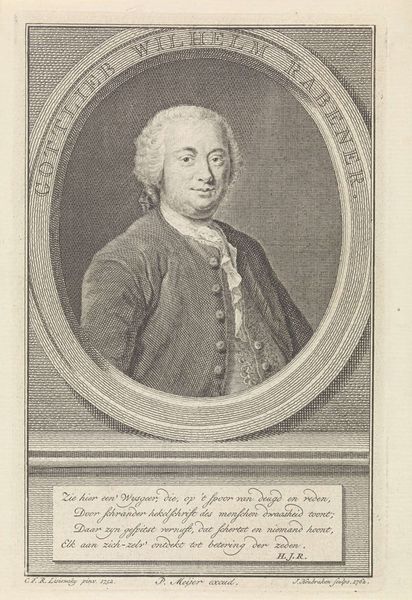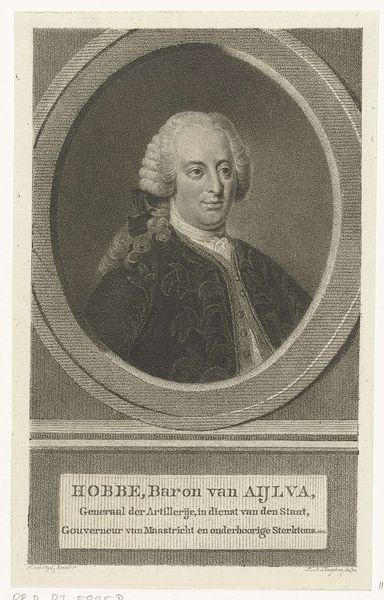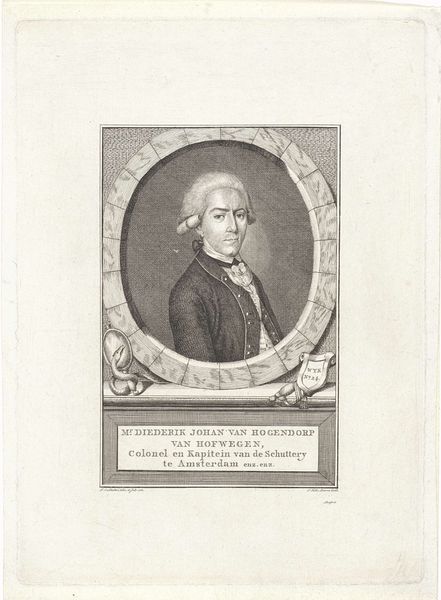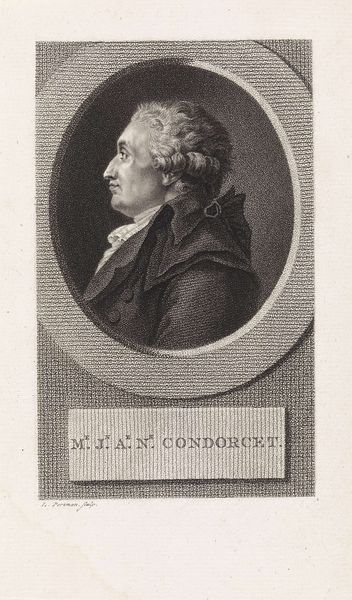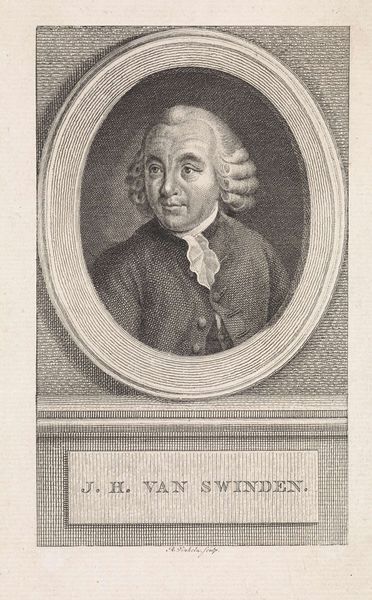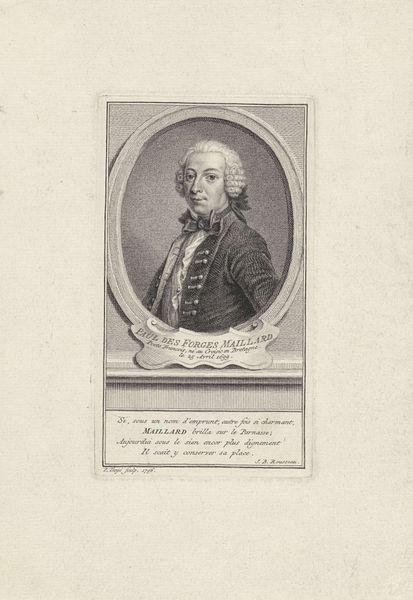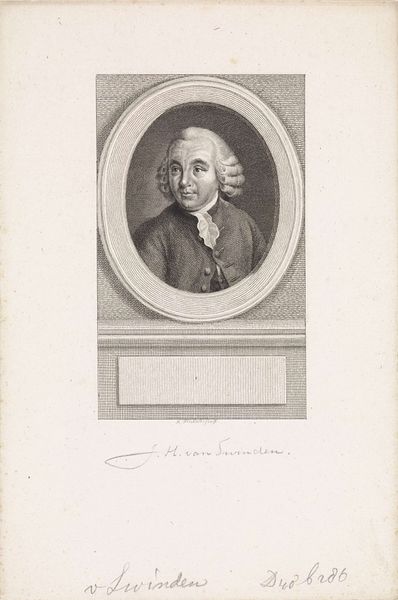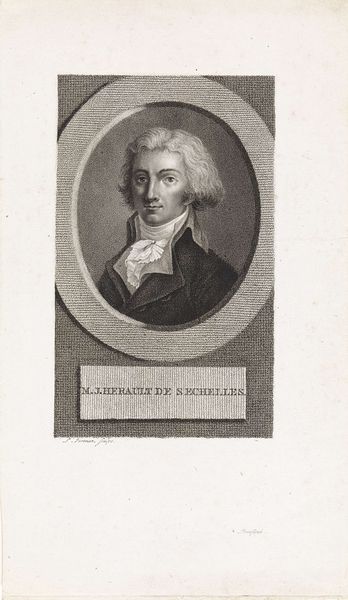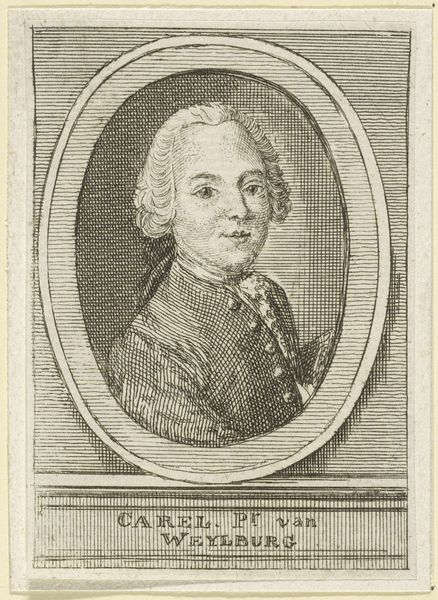
engraving
#
portrait
#
neoclacissism
#
16_19th-century
#
old engraving style
#
historical photography
#
19th century
#
history-painting
#
engraving
Dimensions: height 245 mm, width 155 mm
Copyright: Rijks Museum: Open Domain
Editor: Here we have an engraving from around 1800, "Portret van Isaac René Guy le Chapelier" by Lambertus Antonius Claessens. It's a profile portrait within an oval frame, and it strikes me as incredibly formal and reserved. What do you see when you look at this print? Curator: The starkness is indeed notable. Let's examine the formal elements. Consider the artist's strategic employment of line. Note the sharp, clean lines that define the sitter's profile, juxtaposed with the softer, more diffused lines creating the wig. This contrast adds depth. Do you notice anything about the light and shadow? Editor: Yes, the light seems to be coming from the left, highlighting his face and the ruffled collar. There's not a lot of gradation; it's quite stark, which adds to the severity. Curator: Precisely. The limited tonal range creates a sense of austerity. Observe also the oval frame, its rigid geometry further containing the image and reinforcing the formal restraint. How does the inscription “M. Chapelier” at the base function within the composition? Editor: It anchors the portrait, making it seem like a formal record. It’s almost like a scientific illustration in its precision and lack of overt emotional expression. Curator: An astute observation. The typography, carefully chosen and meticulously rendered, complements the overall aesthetic of rational order and clarity. Consider, too, the texture achieved through the engraving technique; it is meticulously controlled. Does the surface quality invite tactile engagement, or does it maintain a certain distance? Editor: It feels very controlled and distant. You wouldn’t want to touch it; you'd want to observe it from a respectful distance. Curator: Indeed. And in that distance, the image asserts its own self-contained logic, revealing the Neoclassical pursuit of idealized form. Editor: That focus on the formal elements really helps me appreciate how much thought goes into creating even what appears to be a simple portrait. Thanks. Curator: It has been my pleasure. Examining the inherent structures unveils its design, and in its construction of form.
Comments
No comments
Be the first to comment and join the conversation on the ultimate creative platform.

